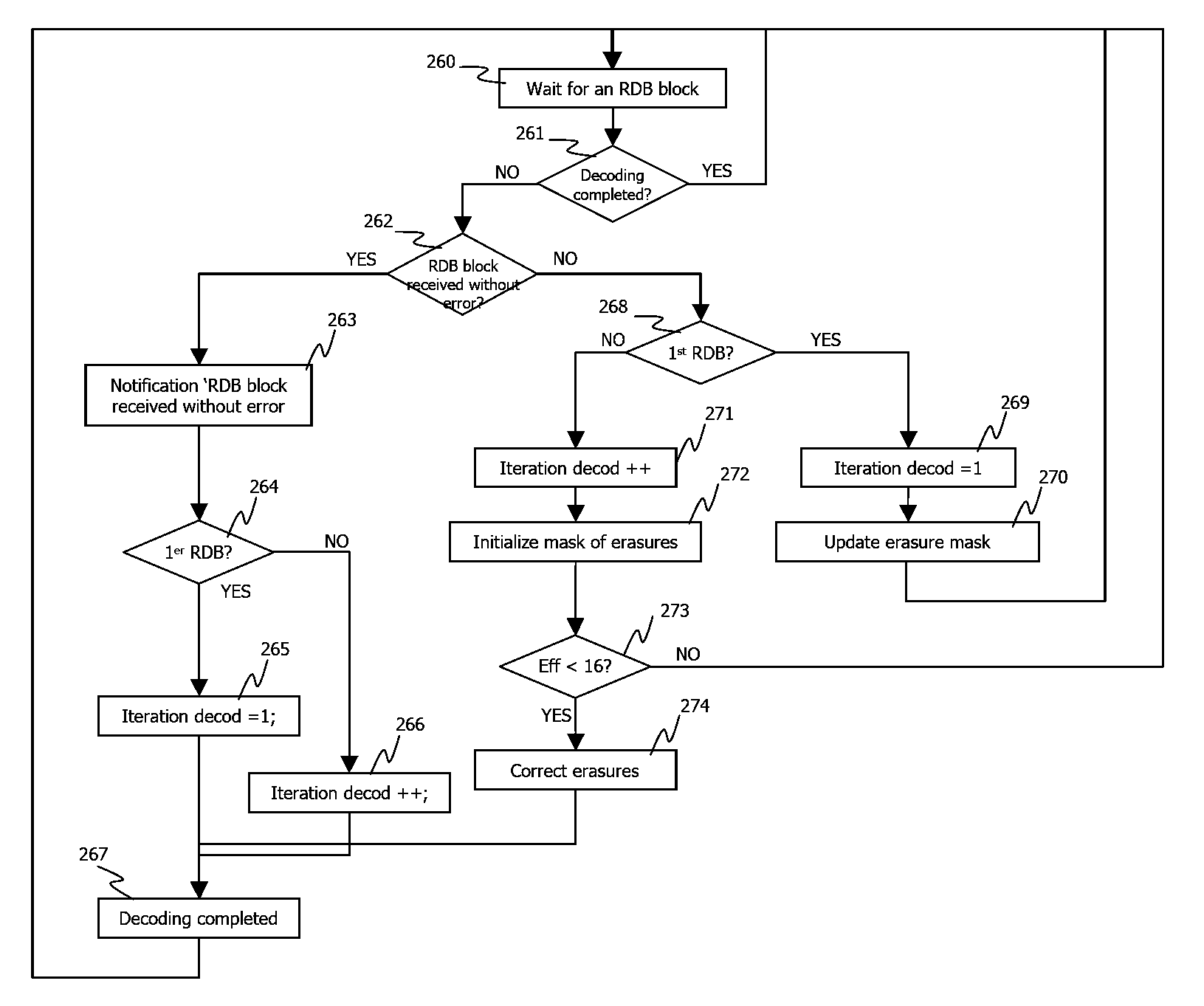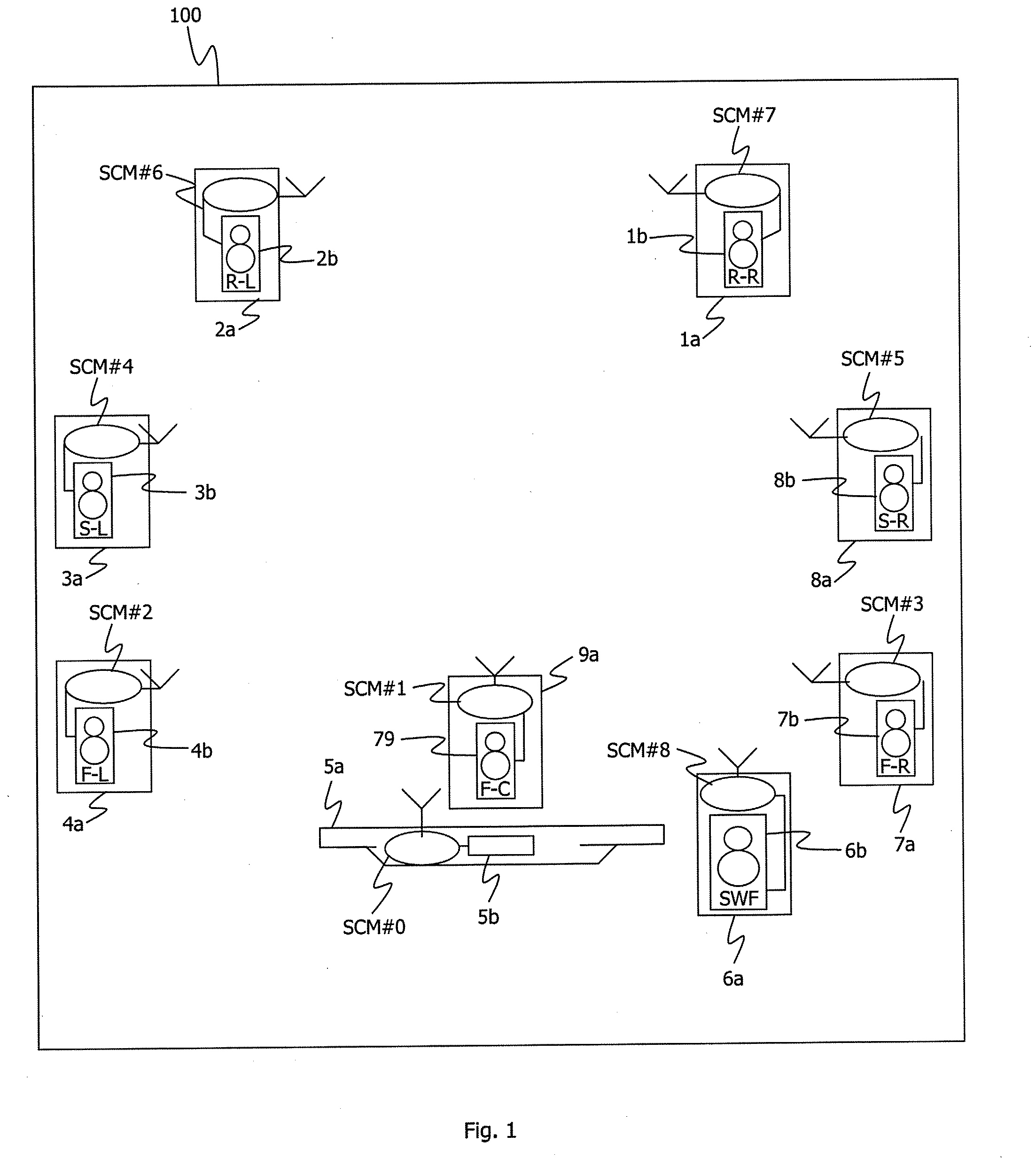Method of decoding content data blocks, corresponding computer program product and decoding device
a content data and block technology, applied in the direction of code conversion, error correction/detection using convolutional codes, code transmission, etc., can solve the problems of low efficiency, high bit rate brought into play, and inability to maintain efficiency, so as to minimize processing time, consumption of resources and energy, and cost little in terms of resources and energy
- Summary
- Abstract
- Description
- Claims
- Application Information
AI Technical Summary
Benefits of technology
Problems solved by technology
Method used
Image
Examples
Embodiment Construction
[0090]The description of a particular application of the decoding method according to a particular embodiment of the invention is situated here below in the context of a communications network 100 which is a 7.1 type home cinema network as illustrated in FIG. 1.
[0091]Naturally, the invention can also be applied in the context of a 5.1 type home cinema or even in any other communications network.
[0092]For example, the home cinema network 100 comprises:[0093]A WAD (“Wireless Audio Decoder”) node referenced 5a which is for example a flat-screen television set. The WAD 5a comprises a multiple-channel audio decoder or “surround sound decoder”) referenced 5b. The decoder 5b is capable of broadcasting on the different audio channels associated with the audio-video content displayed on the flat screen in a way that is perfectly synchronized in the communications network 100. Preferably, the WAD node 5a also comprises an audio-video source terminal (for example in DVD player not shown);[0094...
PUM
 Login to View More
Login to View More Abstract
Description
Claims
Application Information
 Login to View More
Login to View More - R&D
- Intellectual Property
- Life Sciences
- Materials
- Tech Scout
- Unparalleled Data Quality
- Higher Quality Content
- 60% Fewer Hallucinations
Browse by: Latest US Patents, China's latest patents, Technical Efficacy Thesaurus, Application Domain, Technology Topic, Popular Technical Reports.
© 2025 PatSnap. All rights reserved.Legal|Privacy policy|Modern Slavery Act Transparency Statement|Sitemap|About US| Contact US: help@patsnap.com



